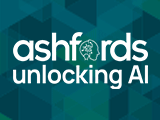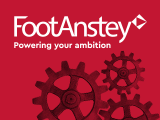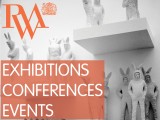The University of Bristol launched a new consultation exercise on the plans for its £300m-plus Temple Quarter campus this week with the promise to make it as inclusive as possible to benefit neighbouring communities.
The Enterprise Campus on a derelict seven-acre site alongside Temple Meads railway station will usher in a new era for the 110-year-old university, including new research, enterprise and teaching buildings that will be home to some of the world’s most hi-tech facilities. 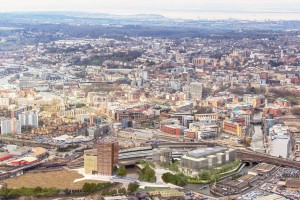
But while much attention has been on the design of these new buildings and the campus as a whole, the university – a member of the elite Russell Group – also sees it as an opportunity to widen participation in higher education and engage nearby communities where university attendance has historically been low.
The university’s deputy vice-chancellor for new campus development Prof Guy Orpen believes the plans give Bristol a unique opportunity to ‘open up’ the university in a number of innovative ways.
For a start, the campus will be fully open, with local people encouraged to take part in events there. The five-storey main academic building will be “an open and welcoming space,” he says.
Its ground floor will host exhibitions, public events such as lectures and film screenings, pop-up catering, a café and shop.
Its foyer will be connected to a number of social and enterprise spaces on the ground floor designed to put local communities at the heart of the building. 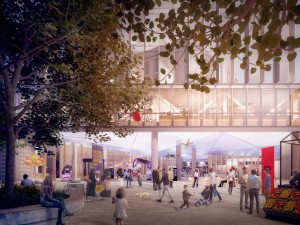
With innovation at the heart of the campus, those behind the plans also want it to link with local communities in new ways.
The university is working with the Barton Hill Settlement to set up new courses for local people. The centre – at the heart of one of Bristol’s poorest areas – has its own ambitious expansion plans that include using shipping containers to widen and enhance its services.
The university will be taking a lease on three of these from next year for staff and students to work with the Settlement, including new ways of accessing higher education for local people without the traditional entrance qualifications.
“We are taking the campus out to the communities – not just expecting them to come to the campus,” said Prof Orpen.
The campus will also open up part of Bristol long closed to local people with new footpaths and cycle paths to improve connections between the city centre and the east of the city.
“New bus routes will not to only allow students to leave the campus but bring people into it,” said Prof Orpen.
“The underpass at Temple Meads station will come straight out onto the site – it is exactly the right height – which will also bring people into the campus.” 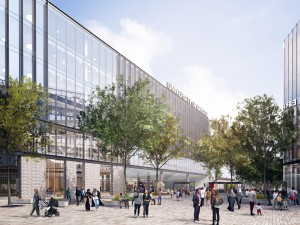
The team behind the scheme has spent the past few years looking at how universities around the world have developed new campuses. The closest example is Cornell Tech in New York, which has redeveloped Roosevelt Island in the East River between Manhattan and Queens.
“It’s very impressive – but it’s in the middle of a river and cut off from local people,” says Prof Orpen.
“In contrast, we are going to bring local people into a unique campus right in the city centre.”
Outline planning permission for the campus has already been granted and a public consultation on the detailed design of the student residential accommodation, located on the northern end, next to Brocks Bridge, of Temple Island, was held in April.
The new campus will provide teaching, research and innovation space for 3,000 students, around 800 members of staff and external partners from business and the city’s communities. It will have a clear focus on digital, business and social innovation.
The campus will be home to the university’s new School of Management, its Centre for Innovation and Entrepreneurship and much of its digital engineering activity. It will include the recently announced Bristol Digital Futures Institute and the Quantum Technology Innovation Centre.
Prof Orpen added: “We are excited to share our vision for the campus and look forward to hearing people’s feedback.
“We are creating a dedicated space for collaboration and discovery where businesses, civic partners and the local community can work together with our students, academics and researchers.
“This meeting of minds will develop fresh perspectives and explore how we can innovate responsibly, create an inclusive economy that works for everyone and address some of the future’s big research questions.”
The detailed designs of buildings and public spaces on the site of the former eyesore Royal Mail sorting office are revealed in the latest plans, pictured, with the University of Bristol saying it hopes to create a striking new landmark for the city on a high-profile gateway site.
When the campus opens, neighbouring communities and rail passengers at Bristol Temple Meads will be greeted by two glazed buildings, landscaped public spaces, and new pedestrian and cycle routes joining the city centre to the east of the city.
The buildings have been designed to be sensitive to the historical setting of Temple Quarter, while also reflecting the modern, innovative nature of the campus. For example, the use of textured masonry relates to the stone and brick qualities of the Floating Harbour and Temple Meads station.
The university has a commitment to become carbon neutral by 2030 and the new buildings on the Cattle Market site have been designed to support this with a number of eco-friendly elements incorporated into their design, such as rainwater harvesting, a biodiverse roof, solar panels and heat recovery systems.
The campus will be car-free and proposals include a new transport hub at the entrance to the Cattle Market site which could accommodate extended public bus services.
A consultation on the plans will run until September 25 with the public being invited to find out more and share their view via an online survey, series of events and exhibitions.
The development is part of a wider regeneration of the Temple Quarter area that will help create a new inclusive city district, contribute to economic growth and job creation.
Members of the public can take part in the consultation at www.bristol.ac.uk/templequarter or in person by visiting the drop-in session or public meeting, where they will have the chance to meet the team and ask questions.
Drop-in session:
- Saturday September 21, noon to 2pm, Windmill Hill City Farm, the Old Dairy, Philip Street, Bristol BS3 4EA
Public meeting:
- Wednesday September 18, 5pm to 7pm, Hillcrest Primary School, Cemetery Road, Totterdown, Bristol BS4 3DE
Plans will also be on display at:
- Engine Shed, Station Approach, Bristol BS1 6QH
- Beacon House (The Triangle), University of Bristol, Clifton BS8 1SE


